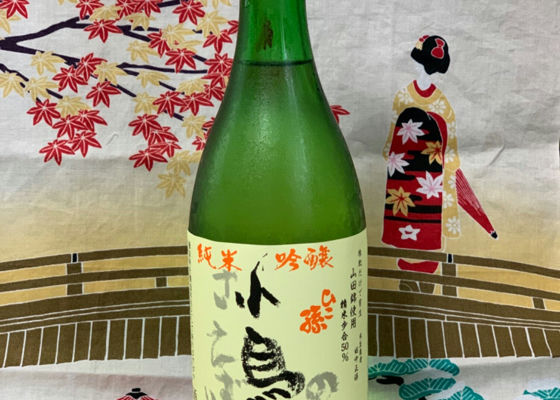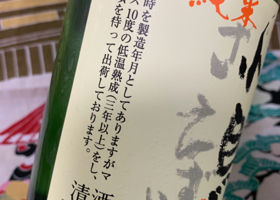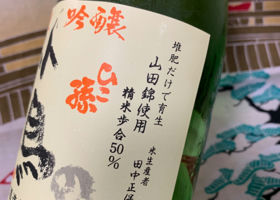


武侯祠
Seven year old sake. They ship it at the peak of its flavor by aging it at minus 10 degrees Celsius with low sound aging. Saitama Prefecture produces a surprisingly large amount of sake, and there are top brands such as Kahayo Yoku, which I intend to slowly conquer. All I knew was that this brewery was the first in the postwar period to produce all of its sake from pure rice. The brewery seems to have a history of more than 100 years.
At first, the lack of color on the label is noticeable, with no appealing colors, letters, or overall design.
They seem to be concentrating on conveying what they want to say. I imagined that the brewer must be trying to avoid wasteful practices and cherish the old knowledge.
The bottle is opened. The aroma is full and mellow. It has a sense of depth.
The umami spreads slowly in the first sip. The taste of Yamada-Nishiki can be felt well. However, the taste is soft and not forced. Therefore, the use of rice has a strong influence on the flavor profile of this sake. Perhaps this is the effect of slow aging at low temperatures. This is the first time for me to drink a sake with this balance.
If I drank it while intoxicated, I would probably just end up saying, "It's soft," because of its elegant and delicate flavor. It seems to be good warmed up. I prefer it cold.
Japanese>English
武侯祠
On the second day, I was a little tired after starting work after the Bon Festival. I take a sip with cold tofu. A sense of security that I could drink without being conscious of it. I savored it while gazing up at an angle of 30 degrees. If it were a little cheaper, I would make it a regular place to stay, but I'll leave the special feeling of drinking once in a while.
Japanese>English